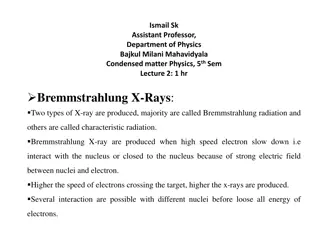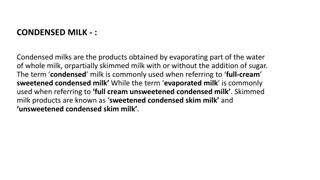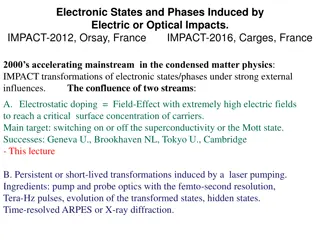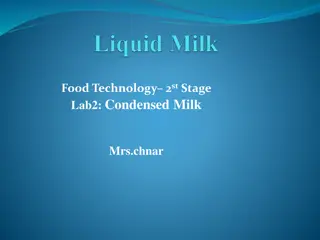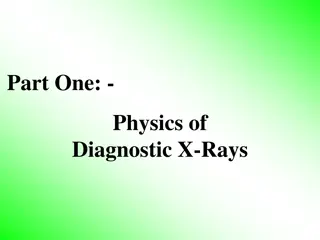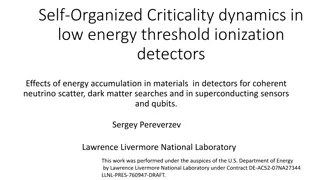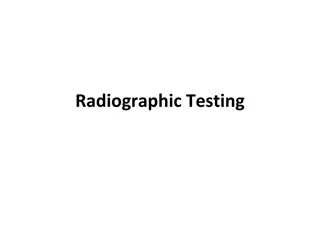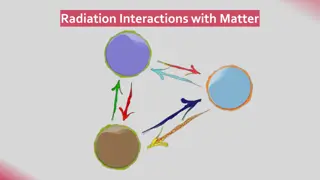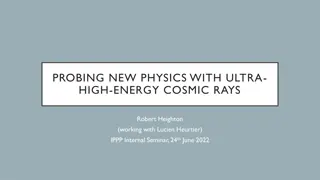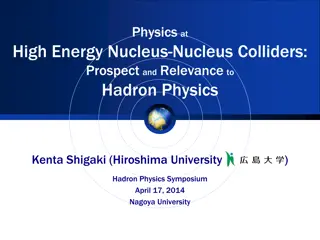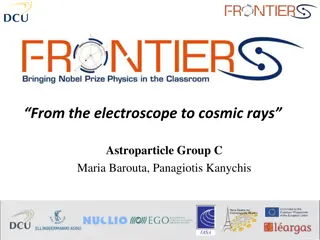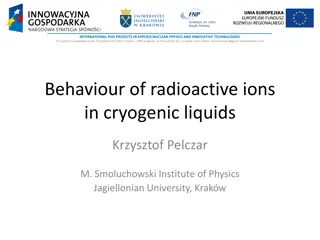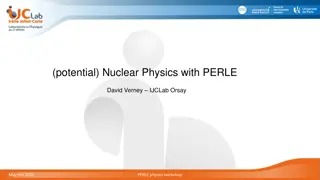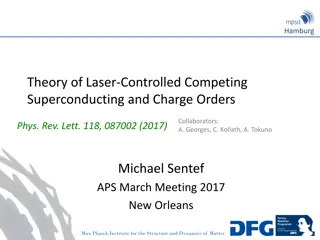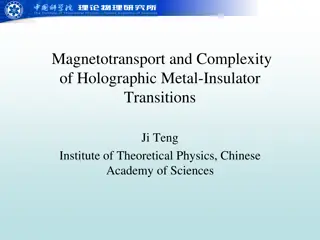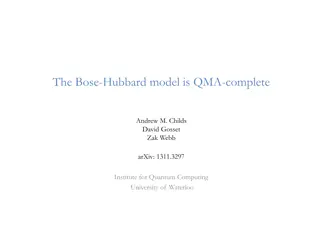Exploring the History and Properties of X-rays in Condensed Matter Physics
X-rays, discovered by Wilhelm Roentgen in 1895, are highly penetrating rays with unique properties such as electrical neutrality, masslessness, and the ability to travel at the speed of light. They are valuable in medical treatments due to their absorption characteristics and ability to cause photoelectric emission. The X-ray production process in a tube involves a cathode, anode, and tungsten filament. When accelerated electrons strike a metal target, X-rays are generated. The process involves converting kinetic energy into electromagnetic energy.
Download Presentation

Please find below an Image/Link to download the presentation.
The content on the website is provided AS IS for your information and personal use only. It may not be sold, licensed, or shared on other websites without obtaining consent from the author. Download presentation by click this link. If you encounter any issues during the download, it is possible that the publisher has removed the file from their server.
E N D
Presentation Transcript
Ismail Sk Assistant Professor Department of Physics Bajkul Milani Mahavidyala Condensed Matter Physics, 5th Sem Lecture 1: 1 hr History and Properties of X-ray Discovered in 1895 by German Physicist Wilhelm Roentgen First Nobel Prize in Physics in 1901 Highly penetrating and invisible ray Electrically neutral and have no mass Travel at the speed of light in a vacuum. Very short wavelength(0.1-10 ). They are unaffected by electric and magnetic fields They are absorbed by metal and bone. They can cause photoelectric emission. These properties make X-rays are very useful in medical treatment.
X-Ray Tube Glass tube-X-ray are produced in the x-ray tube which is evacuted because of prevents the collision of moving electron with the air molecules and also prevents the oxidation and burnout of the laments. Cathode(negative)-contains lament. Anode(positive)-contains x-ray target
Cathode, Anode and Tungsten Filament Composed of tungsten lament and centered in a focusing cup. Electrons are produced by the lament and focused on the target of the anode. Anode in the x-ray tube is composed with tungsten embedded in a copper stem. Electron hit the target and generated X-ray a lot of heat is produced. Heat is reduced due to the presence of copper anode where it is cooled by oil, water or air. Large atomic number (Z=74) because of efficiency of x-ray production depends on atomic number and high melting point (3370C). Less tendency to vaporize and long life expectancy. X-ray production X-ray are produced when rapidly moving electron accelerated through a potential difference of order 1kV to 1MV strikes a metal target. The source of electron is the cathode or negative electrode and stopped or de-accelerated by the positive electrode(Anode). The electron move between the cathode and anode because there is a potential difference in charge between electrodes. When the electron is stopped on impact, some of the kinetic energy (less than 1%)is converted into EM energy such as X-rays and rest is converted into internal energy of the target


